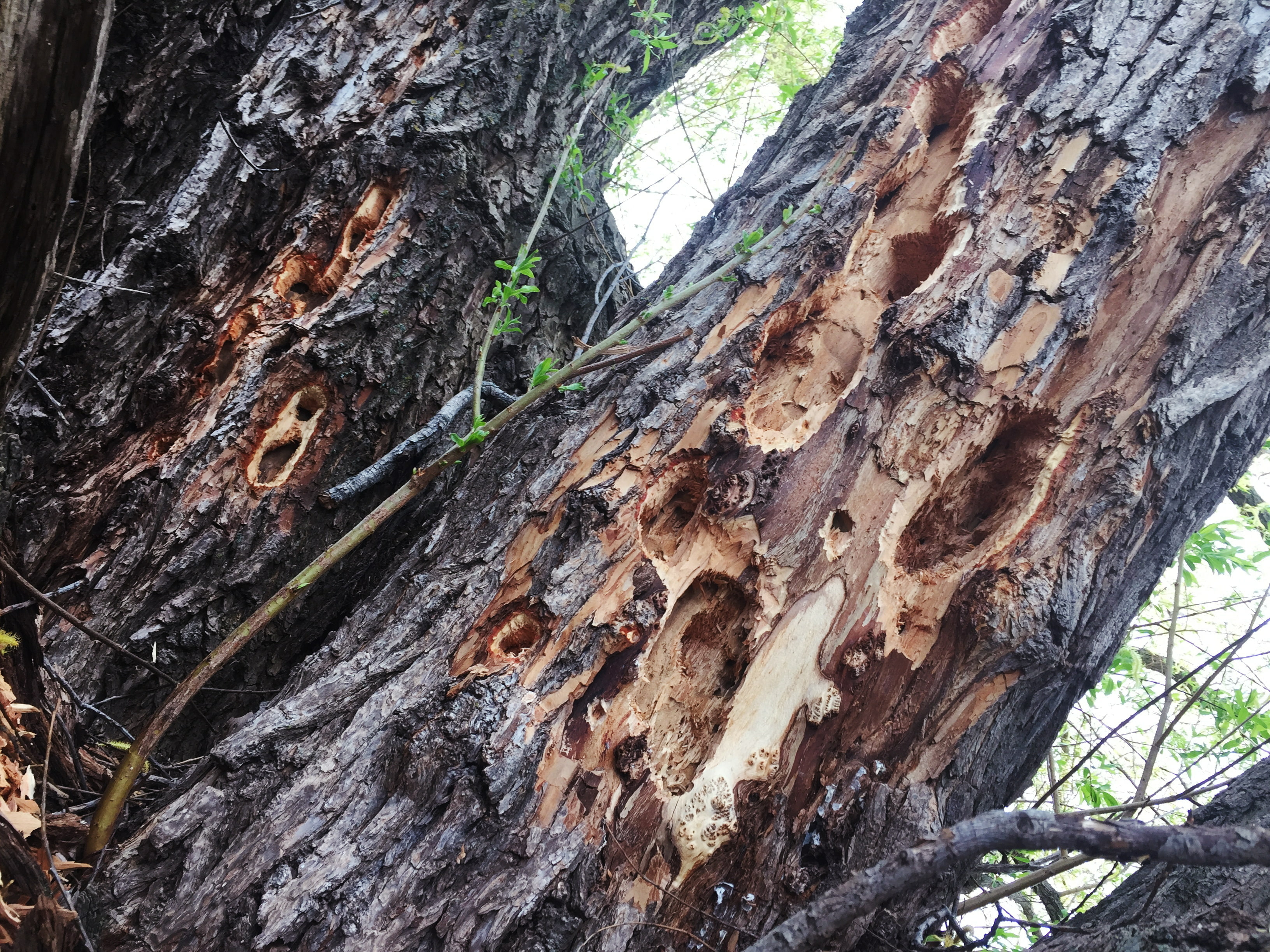My Life in an Office Bird Blind–Dave Waeltz
It’s been a good spring at OneUpWeb. I started with this company in early March when six inches of ice covered the West Arm of the Grand Traverse Bay and the big black willow tree outside our window was completely bare. In just two months, the ice has melted, migratory birds have arrived, and the tree is distinctly green. Without question, this is one of the best desk views a nature-lover could ever have.
OneUpWeb is situated along the shoreline outcropping that is home to a large, old, and regal black willow tree (salix nigra). We love this tree. It’s a focal point and a great landmark for the sailors and anglers who cruise this part of the bay. This tree also happens to be a fantastic habitat for birds and insects.
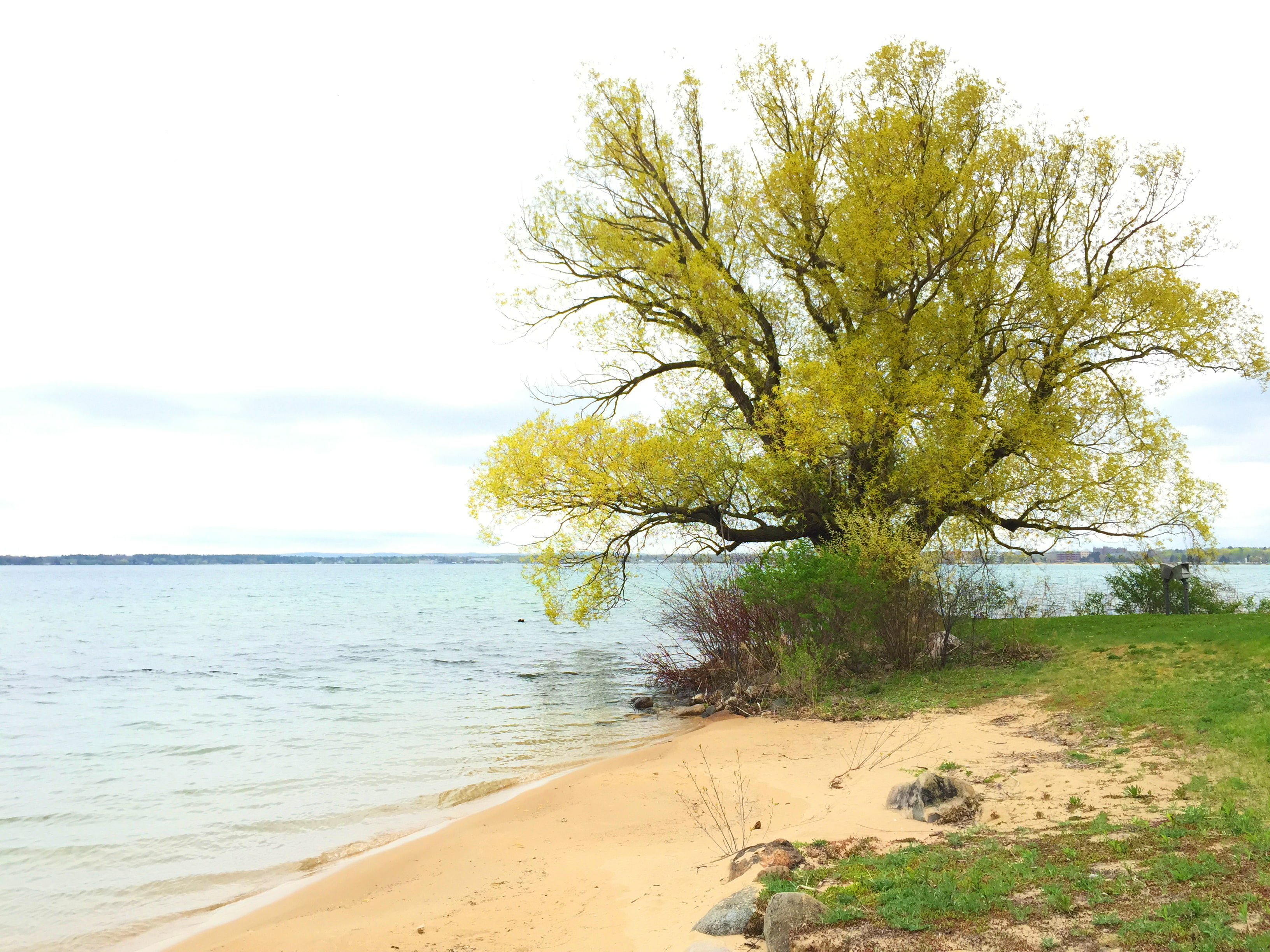
This particular species of tree can be identified in the spring with the appearance of the distinct black willow “catkin” a long, fuzzy, narrow flower with no petals.
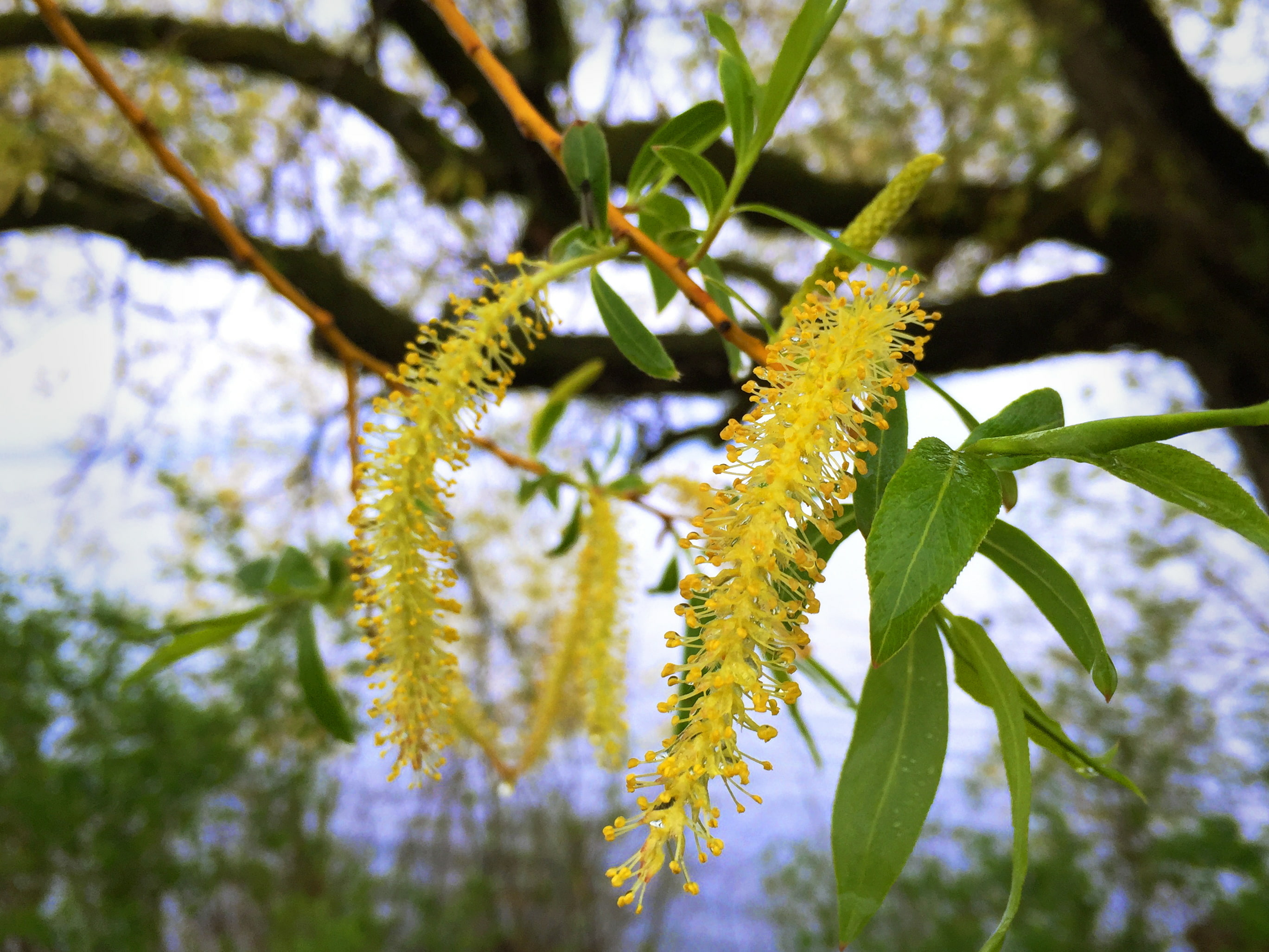
The black willow is native to eastern North America, and is pretty common in our area, especially around low-lying or marshy areas.
- Black willows love wet soil, grow quickly, and has a strong root system that is great for stabilizing shorelines (like ours).
Woodpeckers love our black willow - Black willow wood was once used in the production of artificial limbs because of its light weight and resistance to shattering or splintering.
- A champion black willow, considered to be among the largest black willows in the world is found right here in Traverse City, set in the woods behind the former Traverse City State Hospital (and future home of Oneupweb–coming this summer).
- The willow is an important tree in the history of modern medicine. Nineteenth century chemists isolated salicylic acid from black willow bark and found it produced a “striking relief of acute articular rheumatism.” Modern aspirin is a synthetic product based on the chemistry of the compounds found in the willow. Salicylic acid even got its name from the Latin name for the willow–salix (Randall, 1969).
My desk is situated along a wall of windows with a great view of the Bay, the Old Mission Peninsula, and the heart of Traverse City. More than just a great view of the surrounding region, I also work in a perfect bird blind. Just glancing out the window, I see courting mergansers, diving cormorants, insect-eating purple martins, and even a gull that I caught riding on the back of another gull. The bay is so crystal clear outside our window that it’s easy to see our mergansers swimming underwater in search of fish.
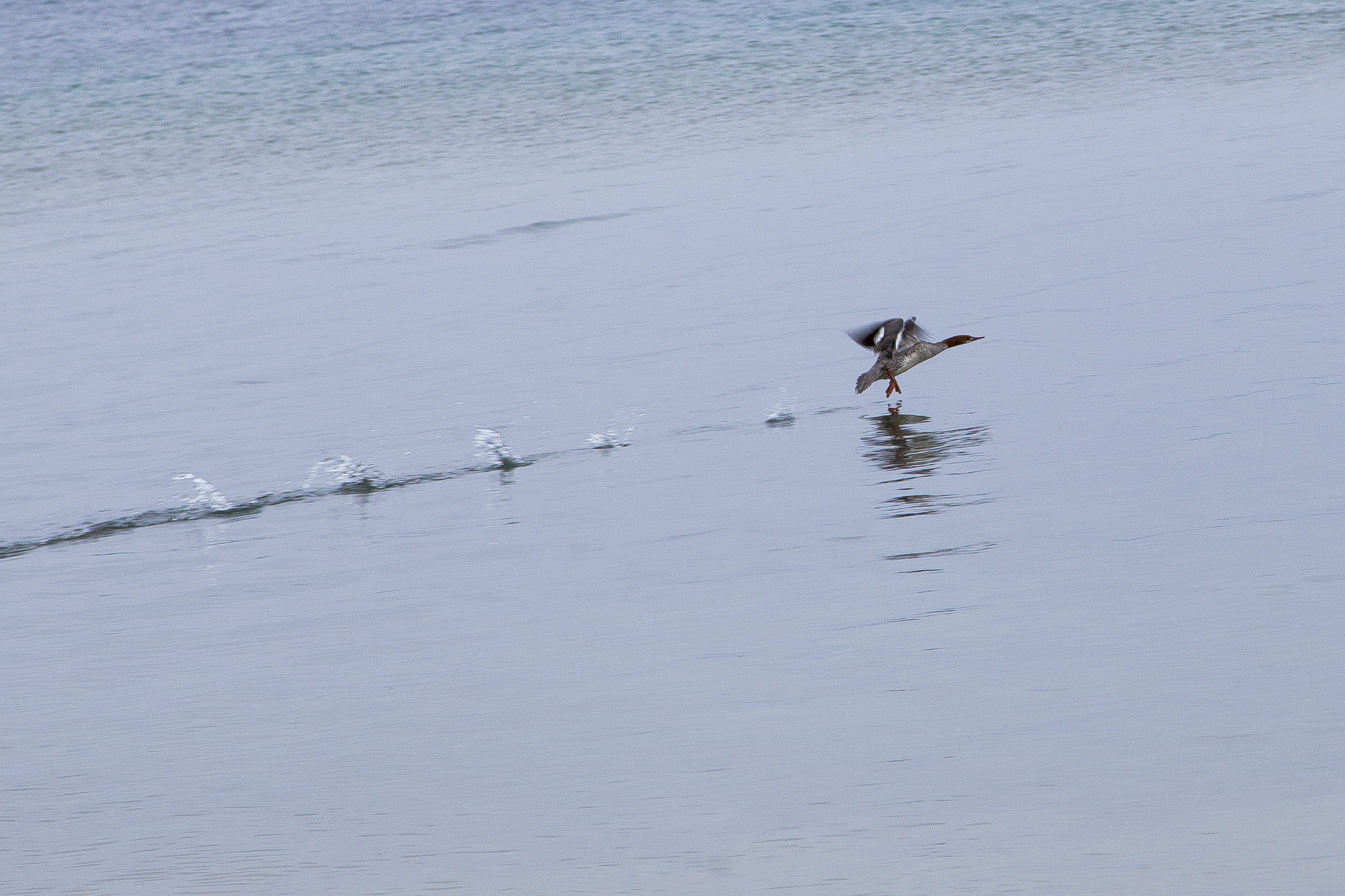
I’ve seen aggressive territorial behavior of killdeer, an adorable butt-bobbing spotted sandpiper, common mergansers fighting with gulls for fish, gorgeous red-breasted mergansers, tundra swans, Canada geese (and their puffy goslings), mallards, ring-billed and herring gulls. They are a great reminder of the importance of a healthy ecosystem.
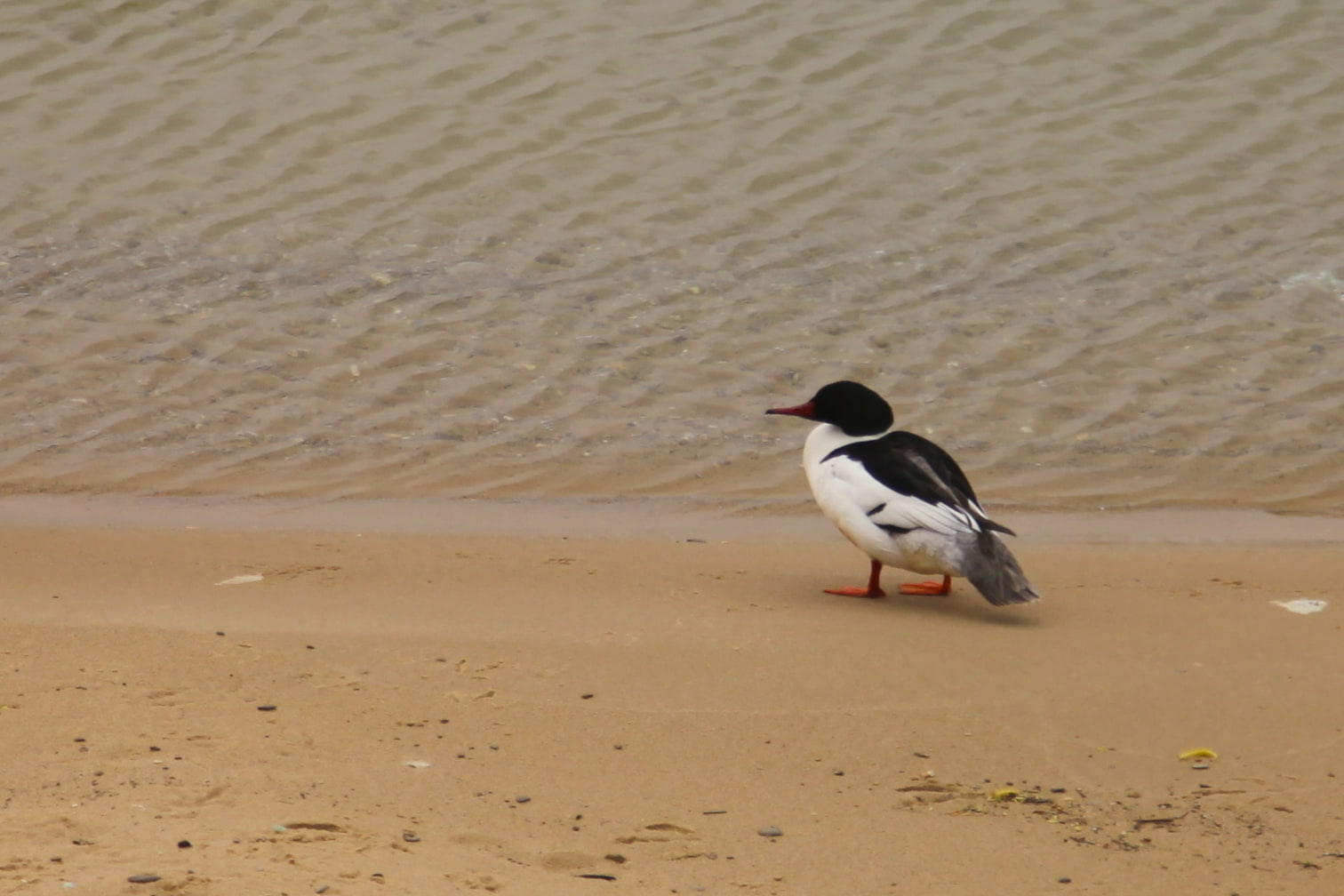
Our black willow and the surrounding area is also home to a plethora of songbirds, including red-winged blackbirds, doves, grackles, starlings, jays, sparrows, finches, juncos, and robins.
We are hopeful for the return of our bald eagles, which frequented the black willow for much of the summer last year. In the meantime, we’ll keep watching the bay, the birds, and the leaves of the willow as we transition from spring to summer.
